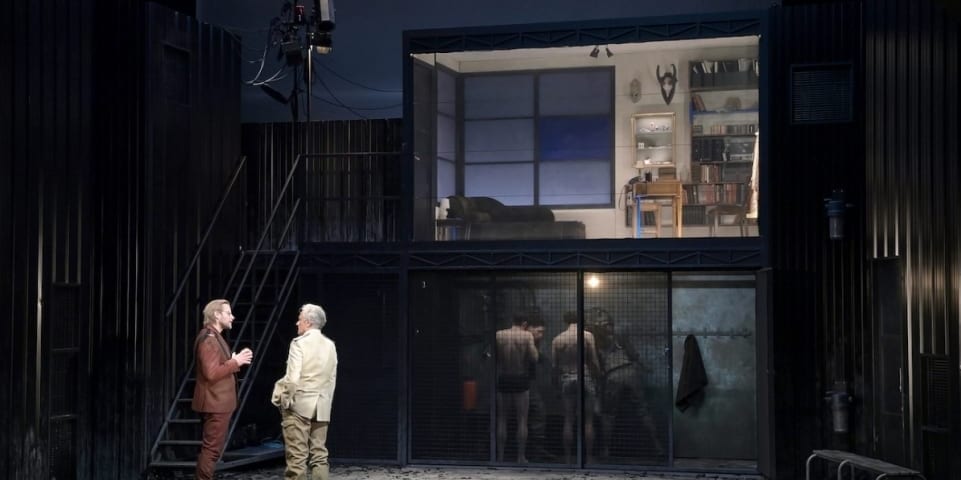For my first time going back to the theatre in months, I was in a good mood and hoping to see something that would make me escape reality for two hours. Too bad for me, Waiting for the Barbarians did the exact opposite: it is the kind of play that hits you with its political message. The play, adapted from South African author J.M. Coetzee’s novel is long and focused on dialogues, and results in a heavy work of art. Its subject matter is extremely serious: it’s about colonialism, torture, racism, and the killing of innocent people.
The play focuses on one character in particular: the Magistrate (Didier Sandre), and the spectator is constantly experiencing the events through his point of view – that echoes the fact that the novel’s narrator is the Magistrate himself. Even though it is the character of an aging man, who has doubts, he is a ‘white saviour’ type of character. That makes it difficult to have sympathy for him at the beginning: he stays rather passive and does not stand up for the ‘barbarians’ that he wants to protect. Didier Sandre’s acting is very on point and gets increasingly touching throughout the play. Through his precise and moving performance, the play seems to be more centered around the fall of a character than around the political discourse itself.
The rest of the cast is very good, too. The actors change roles, giving the impression that violence has multiple changing faces. The promising Christophe Montanez shows his wide range of acting by first embodying a young barbarian who is tortured, acting with his body more than anything. Later in the play, we see him as a young, easily influenced soldier learning different methods of torture, and he reappears as an ice-cold officer who gives the most impressive monologue in the play. Suliane Brahim also gives a tour de force of acting, first as a blind barbarian with a heartbreaking voice, and coming back as the Colonel (Stéphane Varupenne)’s right hand.
Stéphane Varupenne plays the most striking character in the play, the Colonel. He represents the rise of violence in its coldest form and is valued by the great costume designs. The Colonel looks like a steampunk villain from a dystopian film, dressed in a dusty red overall, with sleeked back hair and tiny sunglasses. The costumes (Gwladys Duthil) and the scenography (Benjamin Gabrié), reminiscent of war films such as Apocalypse Now, are successful in creating a unique atmosphere, situating the play in a time and place that could be ours.
Despite all these good elements, the play is probably too long to be perfect all along. Some scenes, such as Montenez’s monologue are very striking but others are too long, and the mise-en-scène is sometimes too kitschy to be touching. The young directors’ choices are sometimes incoherent and that results in a scattered play in which the message loses itself.
Résumé en français:
En Attendant les Barbares n’est pas une pièce à aller voir si l’on cherche à oublier la réalité pendant deux heures : les thèmes traités y sont terriblement durs et actuels, ainsi la pièce opère comme un brutal retour à la réalité. L’atmosphère installée par les décors et les costumes situe la pièce dans un espace-temps flou, entre la dystopie post-apocalyptique et les guerres du XXème siècle, soulignant que cette tragédie colonialiste pourrait avoir lieu n’importe quand et n’importe où. Bien que Didier Sandre incarne un personnage de ‘sauveur blanc’ assez ambigu moralement, il parvient à toucher le spectateur par son jeu. On retiendra particulièrement Stéphane Varupenne qui surprend et glace en colonel tyrannique à petites lunettes de soleil.

